Belfast Film Festival 2024
.png)
In partnership with the Belfast Film Festival 2024, The Seamus Heaney Centre presents a special edition of the Saturday Matinee.
Students attended and reviewed the films being shown, engaging with international cinema, shorts films and debuts/ second directorials. The festival's opening film was Seamus Heaney Centre's lecturer, Aislinn Clarke's Irish-horror, Fréwaka.
The Belfast Film Festival ran from the 31st of October to the 9th of November.
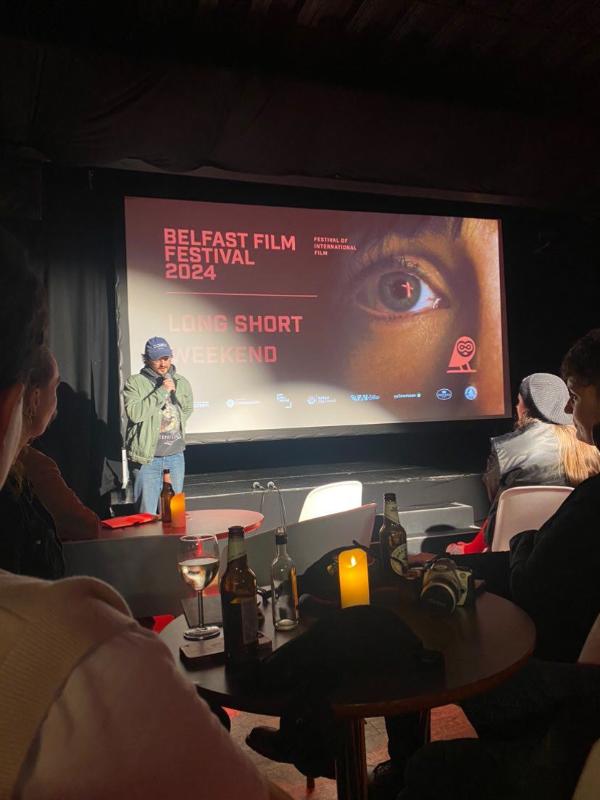
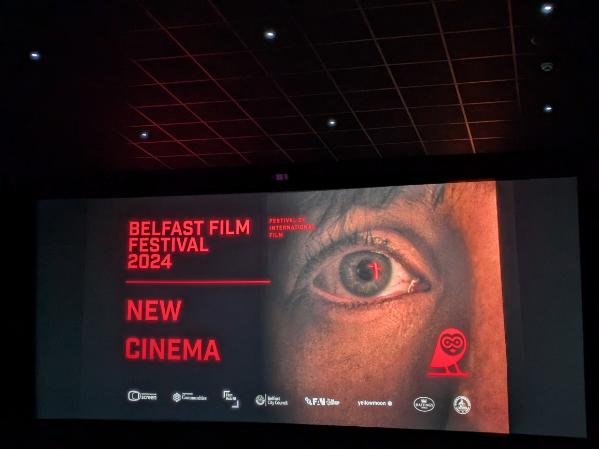
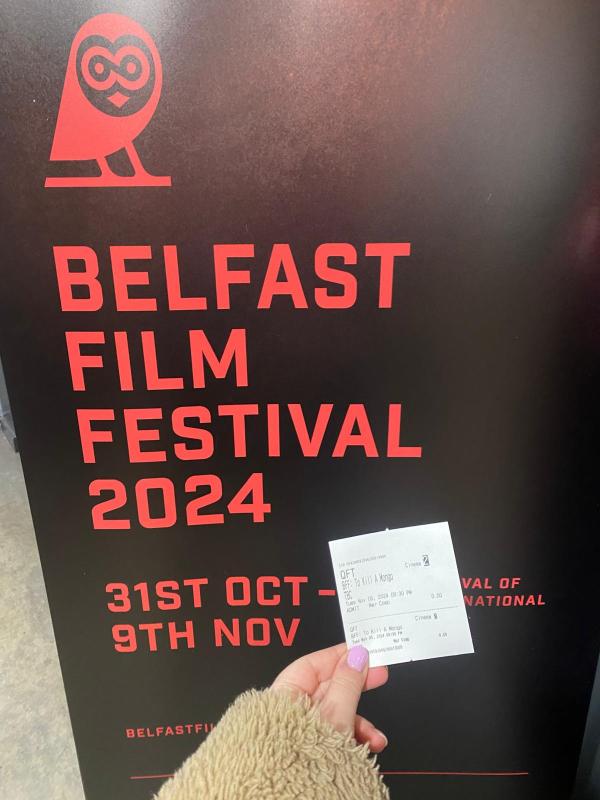
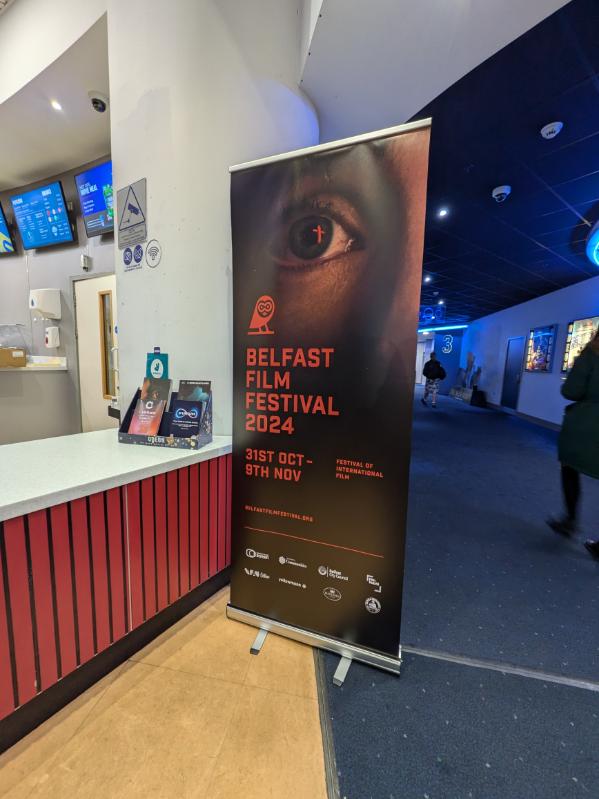
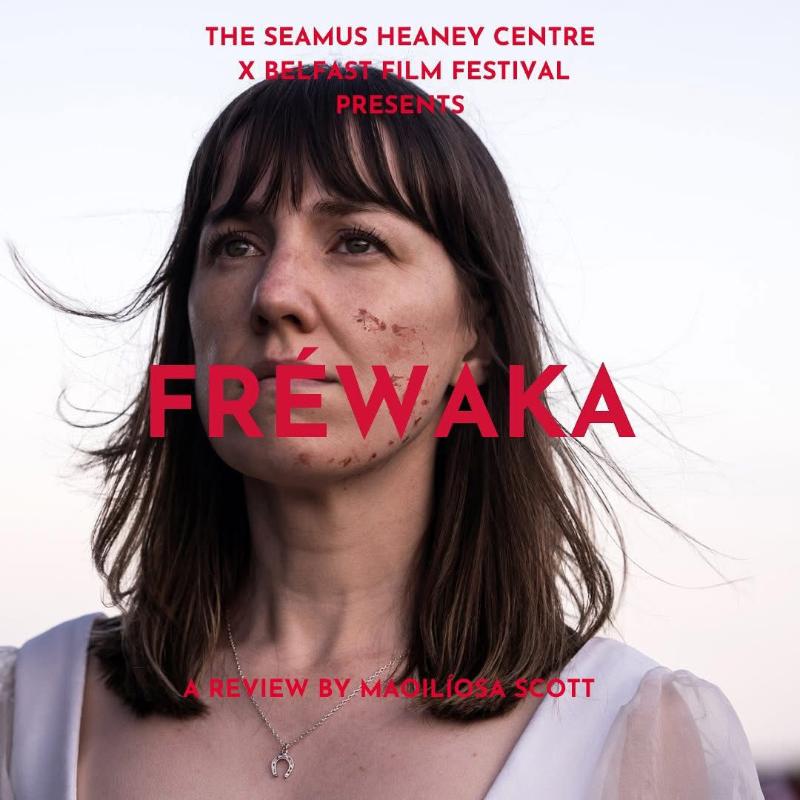
A highlight of Gaelscoil education was when they would pull all twenty-five of you into the biggest mobile classroom, lights dimmed, Murmers come in, with their creepy basket masks, to perform stories.
If there was an ideal audience for Fréwaka, it was me. Folk horror as Gaeilge, featuring a queer protagonist, and an unsettling amount of Catholic iconography: it’s hard to be objective about a film that’s everything you want a horror film to be.
Fréwaka is creepy. From start to finish. It doesn’t rely on jump scares or gore to illicit fear, instead, it’s filled with carefully considered lingering shots that invokes fear on anyone raised on a diet of folklore and religion will feel disturbed by. The red light in the mirror, the horseshoes on the door, the recurring motif of the black goat, the Murmers lurking in the window.
One of the final scenes, depicting a descent and ascent into their world, was an incredible piece of cinematography. It was unsettling and disturbing, because there was part of me that wanted to stay there, to see what the world had to offer.
But what really elevates Fréwaka is the relationship between the main characters. Siubhán (Shoo), arrives to take care of Peig, an elderly woman who recently had a stroke, and who is wary and paranoid of strangers coming into her home. As the film progresses, they grow closer, and this growing bond is what really allows us to care about the horrors the characters are facing.
There’s lightness and humour too. One scene shows two men speaking in Irish, assuming Siubhán won’t understand; a familiar experience for Irish speaking outsiders visiting the Gaeltacht.
Aislínn Clarke’s love for the genre and Irish folklore is apparent. The film feels authentic and familiar, the story told is hers, but it’s recognisable too. The horror in the film is never named, but we know who they are, and we know to be afraid of them. The film perfectly captures why even the most sceptical of Irish farmers will leave the hawthorn trees in the fields untouched.
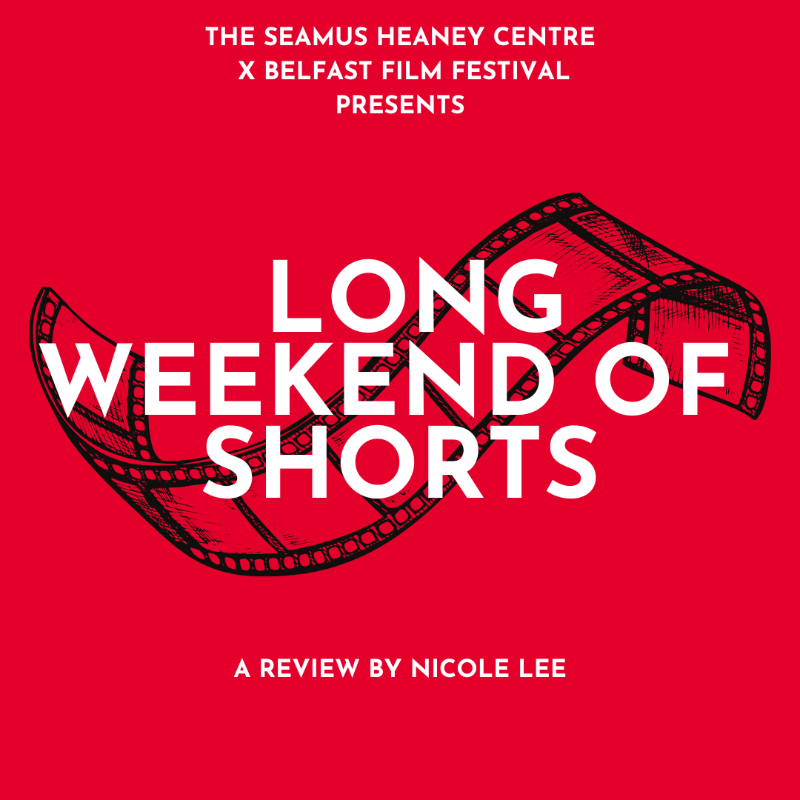
The Belfast Film Festival 2024’s Shorts Competition presented itself with an exciting array of short films coming from different perspectives, cultures and backgrounds. There were thirteen shorts in total, all of them being incredibly well written, directed and shot. After a whirlwind weekend, on Sunday, 3rd November, the winners and special mentions were announced.
The special mention for the Shorts Competition and LUMI Awards went to Die Bully Die by directors Nathan Lacey and Nick Lacey, and writers Matthew Backer and Drew Weston. The comedy horror short’s storyline consisted of Max having dinner with his former high-school bully, Adam, who picked on Max for being gay. The short had a lovely balance between gore, heartfelt dialogue and hilarious moments, while the storyline explored themes of trauma, and how the effects of bullying linger on into adulthood.
Farmers!? took the prize of the LUMI Awards. Directed by Freddie Leyden and co-written by Leyden and Clare Hoey, the short film depicts the lives of Irish farmers and that artists are often found in the most unexpected places, in the most unexpected people. After one of the farmers, who is also a singer, passes suddenly, his friends find it difficult to express their grief. After the funeral where they see his ghost, they release their emotions through a poignant group dance, using their bodies and the expressions of movement as a means of emotional response.
Last but certainly not least, Clodagh was the winner of the Shorts Competition. Director-writer Portia A. Buckley portrays a beautiful film about a woman, Mrs. Kelly, who works as a priest’s housekeeper and assistant, and how a young girl, Clodagh, breaks her rigid ideologies while igniting a spark from within through passion for dance. Once the class with Clodagh is over, Mrs. Kelly finds herself wavering, finally caving into what is considered a “sin” to allow Clodagh to join the dance class permanently. She goes against the church and her faith, forging Clodagh’s documents. She follows her heart and decides for herself what is the right thing to do.
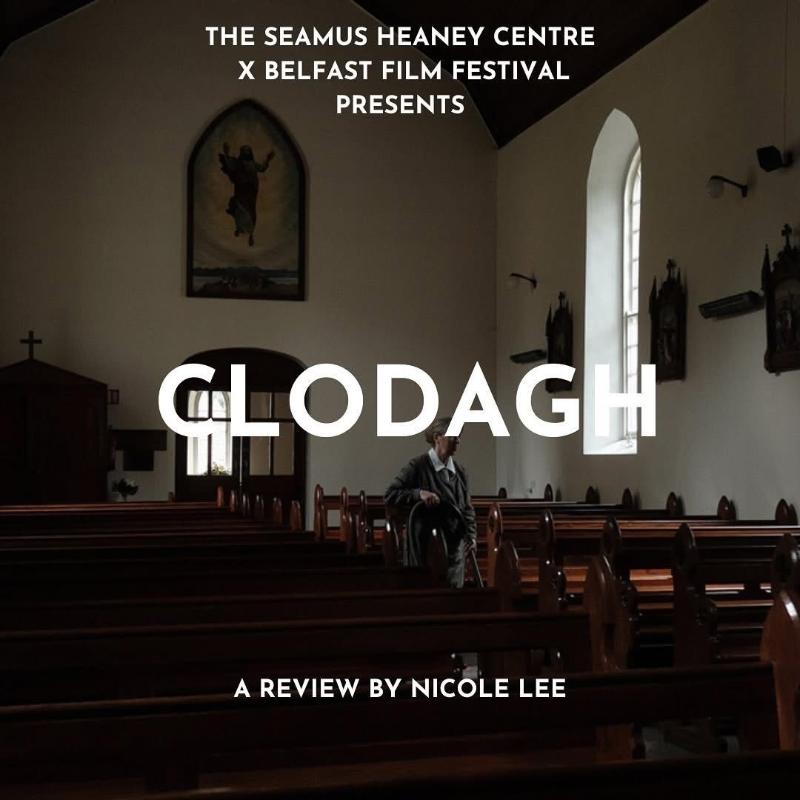
What is the line between right and wrong? Can what society perceives to be wrong, be right? These were the questions I found myself asking after watching the heartfelt short, Clodagh, written and directed by Portia A. Buckley.
Shot on film and set in rural Ireland, the short opened with a mood I can only describe as a mundane and lonely which wears one’s bones down. The story centres around Mrs. Kelly, a priest's old housekeeper and assistant. An uptight woman whose life revolves around structure, faith and the duties of a church.
I found it interesting that she runs a dance school, something which suggests quite a contrast to her personal, monotonous routine, adding dimension to her character. However, it was no surprise when Mrs. Kelly, at first, denies the entry of a new student, Clodagh, who wears colourful clothes and glittery makeup, because her paperwork isn’t done. But after some persuading, Mrs. Kelly caves in.
In class, Clodagh displays an extraordinary gift for Irish step dancing, making the fiddle player perform with the burning passion of an artist, something he had not felt in decades.
Clodagh is a symbol of what Mrs. Kelly is missing in her life. Mrs. Kelly realises this and wants to take Clodagh in as a permanent student but finds herself unable to break the rules to do so.
This internal turmoil kept me on the edge of my seat - the numerous telephone calls being shut down last minute, the frustration Mrs. Kelly faces because she must choose between old ideologies and what her heart truly yearns for, the glitter she wiped off Clodagh’s face still leaving its traces on her finger. In the end, Mrs. Kelly, unable to shake off her awakening, forges Clodagh’s documents, allowing her to become a permanent student. Finally, I could breathe. In the eyes of the church, a sin was committed. But from within the heart, a right has been done.

Blurry faces, haunting memories and a never-ending paranoia which consumes you. Written and directed by James Doherty, Yara is a poignant and painfully authentic short about Syrian refugees. The story revolves around a father struggling to adapt to his new life in rural Ireland while raising his daughter.
Shot in black-and-white, the medium evokes that the father is unable to move on from his past. He speaks about home throughout the short, “Home. Make it like home. Do you remember?”, decorating his house with the little belongings he has managed to bring from Syria. I found the most significant item being that of the dying potted plant, stripped of all its leaves. I thought of it as a reflection of the father, who has been stripped of his identity and down to his emotional core.
He has absolutely nothing left except for his daughter, Yara, the name meaning ‘little butterfly’. It adds depth to why the father is so frightened of losing her, just as how he has lost his wife. He is extremely protective of Yara, keeping her away from school and locking both himself and her inside the house.
I will never forget the many bone-chilling still images of bald trees being used. When Yara asks what has happened to her mother, the images come up rapidly and in a frenzy, almost as though they are flashes of memories the father finds difficult to process. This is further amplified by the still images of blurred faces of Syrian women who, from what I believe, were either lost during the war or during the journey to find peace and freedom. I was struck by how this was depicted because of the accuracy of it all. Refugees are reduced to numbers. They become nameless; their faces forgotten by society. Much that’s left of them are the hazy snapshots from the memories of those who have survived. Yara explores the heartbreaking nightmare experienced by refugees.
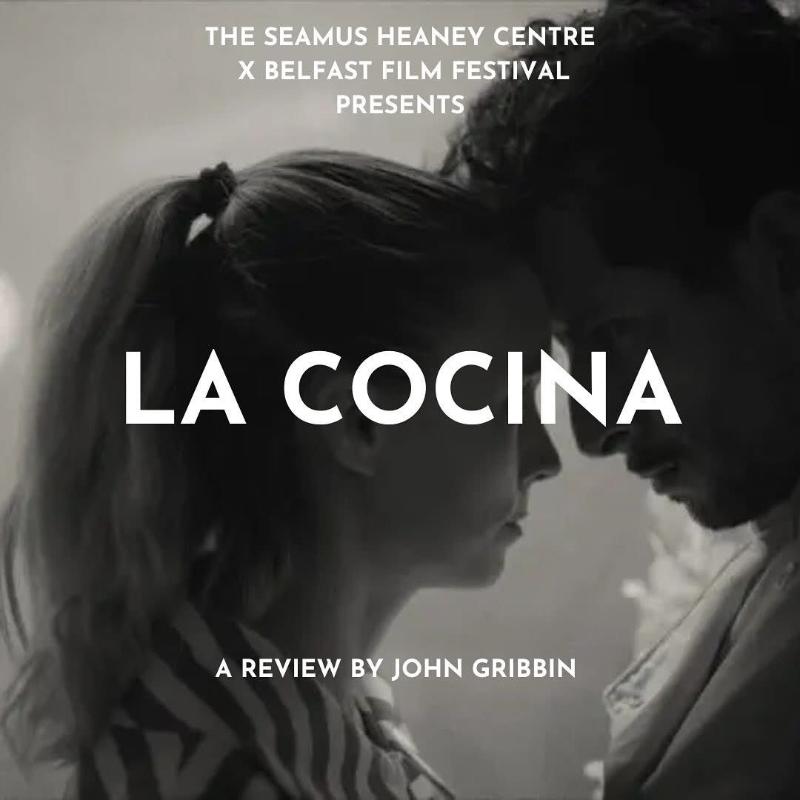
La Cocina was something of an onslaught on the senses. The sound settings were loud, there was constant activity and noise, the colour palette consisted of shades of black, white and grey, and the story was an unrelenting spiral into chaos and despair.
Okay, so having got that off my chest, I have to say that this was also a really beautiful film in many ways. It depicts the world of a restaurant kitchen, staffed almost entirely by immigrants, most of whom are illegal. The film opens with a young Mexican woman getting off the boat in Manhattan and finding her way to the restaurant, in hopes Pedro (Raul Briones) will give her a job. Pedro turns out to be the real protagonist of the film. He is in love with Julia (Rooney Mara), she becomes pregnant with his child. Pedro provides money for her to have an abortion, shortly after we learn $800 has gone missing from last night’s till. An investigation begins.
There is a long, tender scene between the two lovers in the meat safe, cold comforts perhaps, the only place they can escape the endless cacophony of the kitchen.
Although the relationship between Pedro and Julia is the heart of the film, its soul is in the plight of all the staff, illegal immigrants doomed to work in inhumane conditions for extensive hours. The inhumanity is heightened through long shots of people moving through cavernous, labyrinthine corridors, chefs screaming at his workers, fights between fellow workers, broken machinery, floods and rats in the garbage in the back alley.
The miracle is that even in this hellhole - this underground babel where people threaten, joke, taunt, cajole and seduce in multiple languages - the immigrants are shown to be heart-breakingly human- individual, talented, quirky, aspirational, clever, witty and compassionate. La Cocina is made for the USA of today when immigrants will be under greater pressure than ever, especially following the recent election.
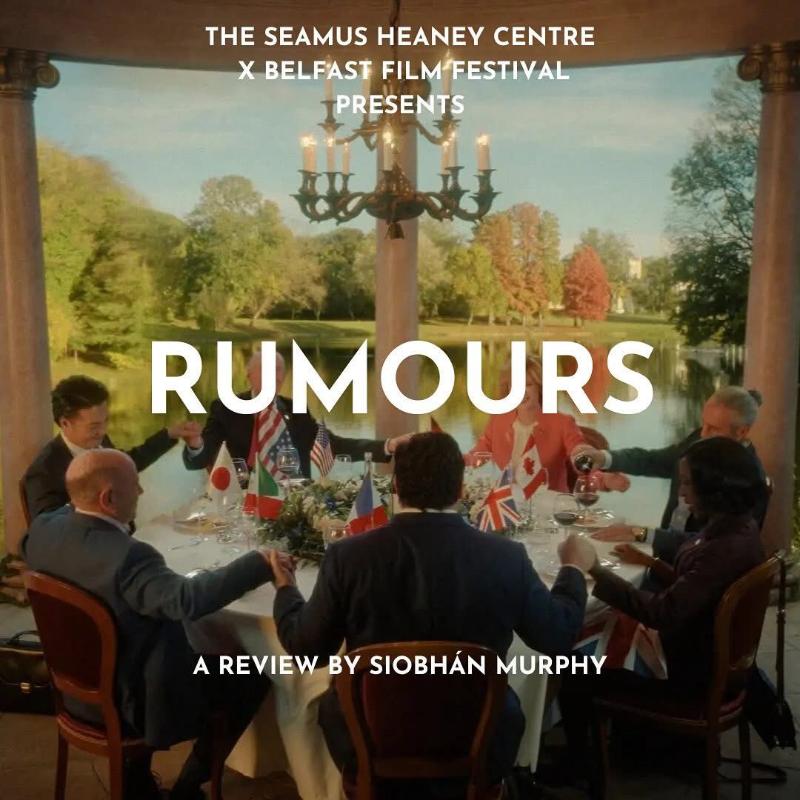
I don’t watch a lot of surrealism, but when I saw the blurb of Rumours, not to mention the cast, I had to see it. World leaders meet at the G7, hosted by Germany, with the goal of drafting a preliminary statement on an unexplained “crisis”. However, their unimpressive efforts are constantly disrupted by “bog zombies”, eerie fog, a giant brain, and most of all, by themselves.
The G7 leaders take cues from their real-world counterparts past and present, from Charles Dance’s dozing, confused President of the USA to Roy Dupuis’ emotionally volatile President of Canada. Cate Blanchett really shines as the German Chancellor, who fails at every opportunity to take the situation seriously. I would have loved to have seen more of Takehiro Hira’s Prime Minister of Japan as, although perhaps a bit side-lined in the story, his performance brought a real genuineness of reaction that sold the surreal situation.
One thing that really struck me about the film was the choices around set and sound. At the start of the movie, we are greeted with over-saturated, almost sickly bright colours, in a nod to the unreal world of the elite. However, as they flee into the forest, we enter a mysterious, foggy landscape where bog zombies carry out creepy rituals around the fire in a genuinely disturbing horror sequence.
The film isn’t afraid to lean into the cliché when it suits it either. Romantic dalliances between Germany and Canada are backlit in gentle pink and soft music. Meanwhile, in a scene that had the whole audience laughing, sorrowful Titanic-esque music plays and the camera lingers on the actors’ faces as the party is split, while some wade into the river to try to find the ferry.
This isn’t a film that will give you all the answers, we’ll never know why the President of the USA had a British accent the whole time. But, by the end, we don’t care. The absurd is effortlessly used to comment on the state of our current society, and, with last Wednesday’s election results, the satire hits closer than ever.
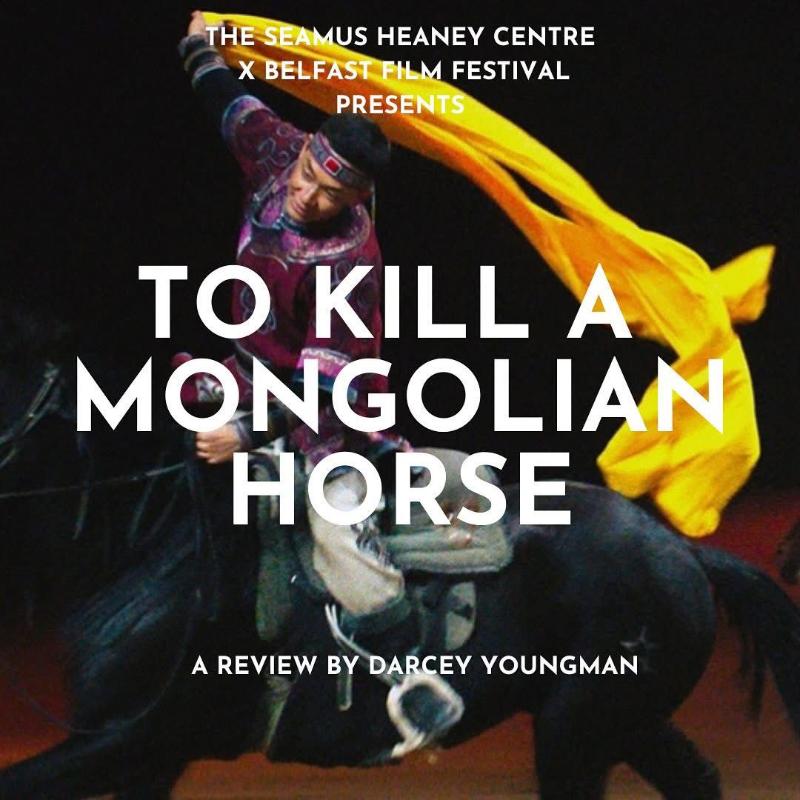
Jiang XiaoXuan’s To Kill a Mongolian Horse is sentimental, and beautiful, yet takes us through feelings of pain and loss, as we watch a culture slowly strip away.
Our protagonist, Saina, the actor's name also being Saina, and one of Jiang’s off-screen friends, is constantly battling with adhering to the tourism of his culture, fighting to keep afloat in a capitalist world, all while caring for his young son, and alcoholic father.
The film is cinematic. It uses long, establishing shots to showcase the landscape. The dry, desert- like scenery, an unkempt land reflecting that of its culture. Saina’s journey is ultimately to lose everything. His sheep, his job, his language, his family, and then his land. However, he holds on to one thing; his horse. Despite the horse's age, that it isn’t winning races nor bringing in money, Saina desperately holds onto it. The horse seemingly is given up, not wanting to leave the stable, not interacting with the other younger horses, and only responding to Saina.
To Kill a Mongolian Horse is about not the killing of a literal horse, but the killing, the wiping out of an indigenous culture. The ending sequence where Saina rides his horse through a road of traffic, drinking alcohol, showcases an end, a reluctant submission, trying to ride away, when he is surrounded by the modern world.
The context more widely of the film is that its funding is from all different Asian countries. Due to strict and rather tedious censorship rules in China, a film like this can be seen to break these regulations. It’s critical, critical of the loss of indigenous cultures, critical of using differing cultures for entertainment purposes. It is not bold, but it is effective, and emotional. Leaving us with a bitter taste in our mouths. That the only way to keep indigenous cultures alive is to make a spectacle of them.
To Kill a Mongolian Horse is silent, yet significant, becoming a film that dares to critique China’s treatment of Mongolian culture and its censorship laws.
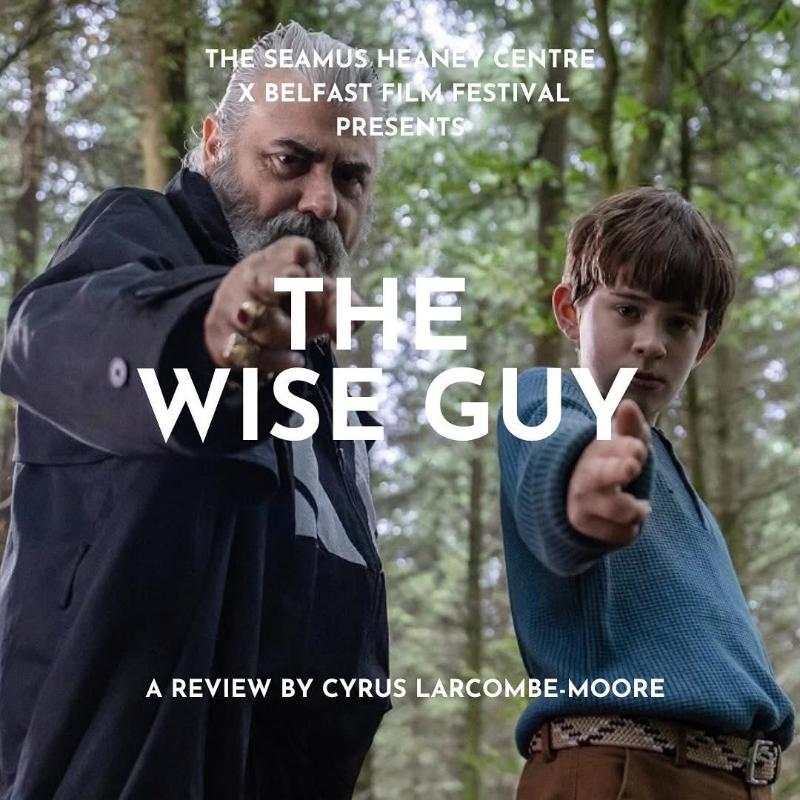
The cliché rings true; on the final night, there’s always a buzz. And like a swarm of excitement, we fill the cinema. Every faux-leather red chair holds another person murmuring about The Wise Guy, Belfast, and each other’s outfits. I even catch a whisper from the seat in front: “I’m working with them on my next project.”
Belfast’s award-winning production company Out of Orbit presents The Wise Guy, the debut feature film of writer and director Sam O’Mahoney. The Wise Guy is a story about Francis (Senan Jennings), an eleven-year-old atheist caught between his parents, a Christian classroom, and his own restless imagination. Spending weekends at his dad’s new girlfriend’s home by the woods, Francis is adrift—until a chance encounter with an American gangster (Darrel D’Silva). Still on the festival circuit, this shoestring-budget Belfast film was chosen for the closing gala of the 24th Belfast Film Festival for good reason.
The film itself is an impressive feat. Shot in just 18 days, The Wise Guy is a testament to the drive and dedication of its debutants, as it was a debut not only for its director but also for the director of photography and the editor. The film’s polish belies its short schedule, a product of meticulous shot planning. This is without mentioning that our protagonist is played by a 13-year-old who could only shoot three and a half hours a day. His performance is a stand-out, capturing the camera effortlessly.
Early in the film, O’Mahoney gives us his thesis: “Embrace what’s real, it’s beautiful.” The motto is scrawled on a poster by Francis’s father (Paul Mallon) and nailed to a telegraph pole in defiance of a Christian slogan. It is a tension looming throughout for Francis, one of finding identity in the throes of approaching teenagerhood. It is the kind of tension found in so many coming-of-age films, a reflection, of course, of a filmmaker’s own desire to grow into their craft. But Sam O’Mahoney has brought such earnest wit and charm to the screen that this film deserves nothing more, just like Francis, than to find a home.
